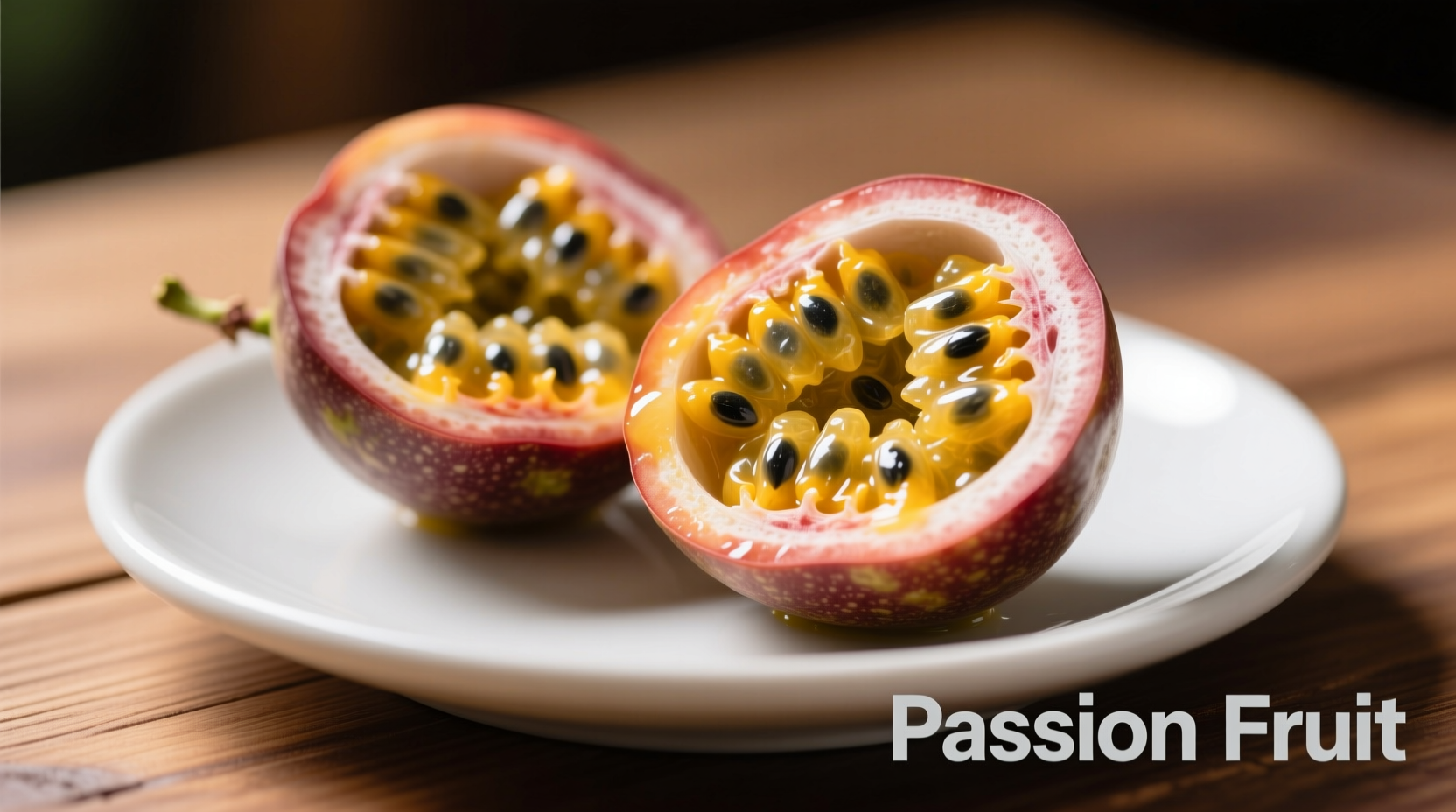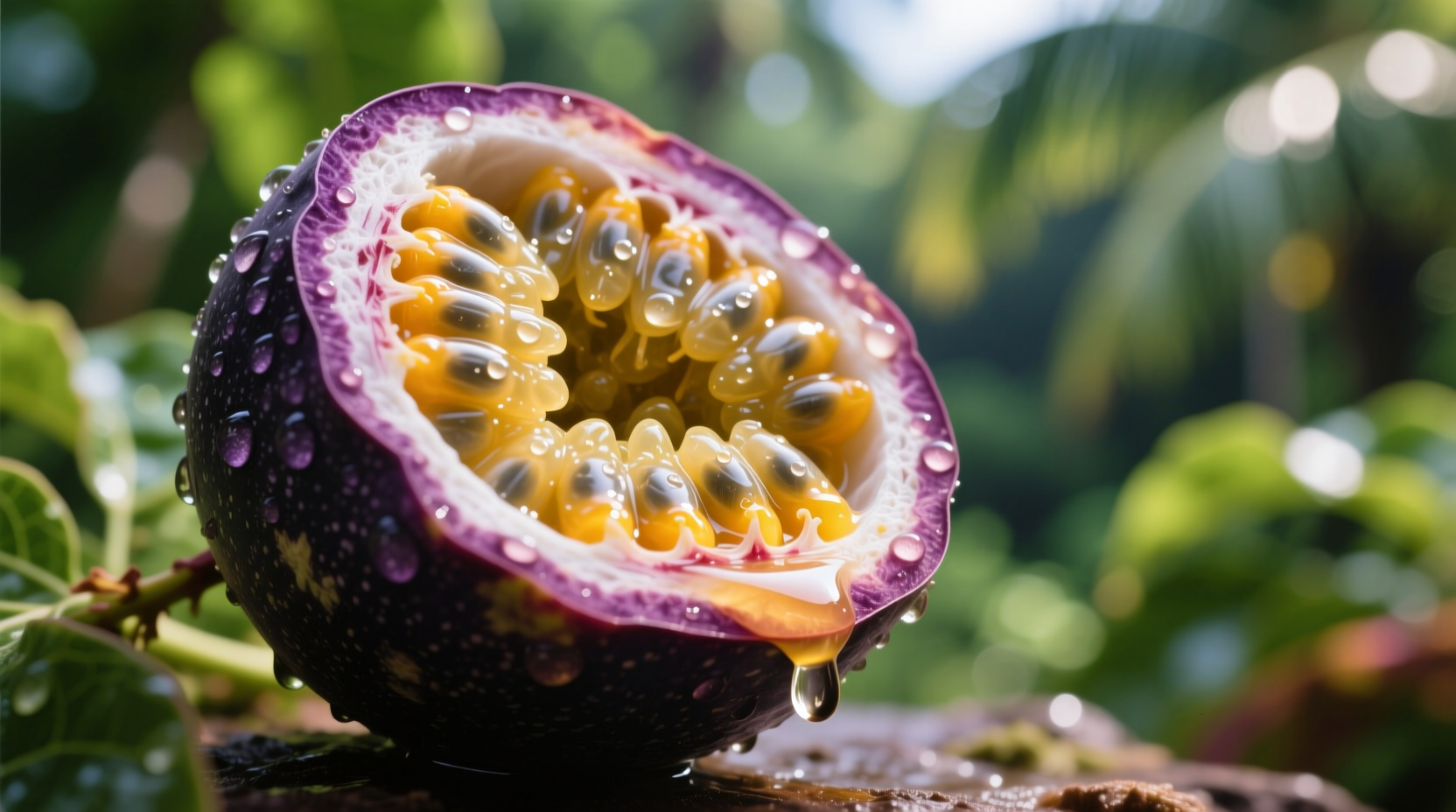Ever slice open a wrinkled purple orb and wonder what flavor explosion awaits? You're not alone. Passion fruit's unique taste profile has captivated food enthusiasts worldwide, yet many remain uncertain whether to expect pure sweetness or mouth-puckering sourness. Understanding this tropical treasure's flavor characteristics transforms how you select, prepare, and enjoy it—whether drizzled over desserts, blended into smoothies, or eaten straight from the shell.
The Core Flavor Components
Passion fruit's taste isn't monolithic—it's a symphony of contrasting elements working in harmony. The dominant characteristics include:
- Tartness: A bright, citrus-like acidity that stimulates saliva production
- Sweetness: Underlying honeyed notes that balance the tartness
- Floral aroma: Distinct perfume-like qualities reminiscent of gardenia
- Tropical undertones: Hints of guava, pineapple, and ripe melon
- Earthy complexity: Subtle musky notes that add depth
This multi-layered profile explains why passion fruit frequently appears in professional chefs' pantries—it delivers both immediate impact and nuanced complexity. The tartness cuts through rich dishes, while floral notes elevate simple preparations.
Texture's Role in Taste Perception
What does a passion fruit taste like with its distinctive jelly-like pulp and crunchy seeds? The texture significantly influences flavor release:
The gelatinous pulp surrounding each seed contains concentrated flavor compounds that burst when bitten, creating flavor pockets throughout each bite. Meanwhile, the edible black seeds provide subtle nutty notes and textural contrast that prevents the fruit from tasting one-dimensional. This combination creates a dynamic eating experience where flavor evolves from the initial tart hit to lingering sweet finish.

Varietal Taste Differences
Not all passion fruit tastes identical. The two primary commercial varieties offer distinct profiles:
| Variety | Flavor Profile | Sweet-Tart Ratio | Best Uses |
|---|---|---|---|
| Purple passion fruit (Passiflora edulis) | Complex floral notes, pronounced tartness | 40% sweet, 60% tart | Raw consumption, sauces, cocktails |
| Yellow passion fruit (Passiflora edulis flavicarpa) | Bolder acidity, more intense aroma | 30% sweet, 70% tart | Processing, commercial juices, baking |
According to agricultural research from the University of Florida's Tropical Research and Education Center, yellow varieties contain higher citric acid concentrations, explaining their more aggressive tartness compared to purple types. This scientific insight helps explain why chefs often blend both varieties for balanced flavor profiles.
Ripeness: The Critical Flavor Factor
What does passion fruit taste like at different ripeness stages? This dramatically impacts flavor development:
- Underripe: Excessively sour with minimal sweetness, firm texture
- Optimally ripe: Deep wrinkled skin, balanced sweet-tart profile, jelly-like pulp
- Overripe: Fermented notes, alcohol-like undertones, mushy texture
The USDA Agricultural Research Service confirms that passion fruit's sugar content increases by approximately 300% during ripening, while acidity decreases by 40%, creating the characteristic sweet-tart balance. This biochemical transformation explains why slightly wrinkled specimens often taste superior to perfectly smooth ones.
Comparative Flavor Mapping
How does passion fruit compare to other fruits? Many describe it as a hybrid experience:
- Guava: Similar tropical sweetness but passion fruit has brighter acidity
- Pomegranate: Comparable seed texture but passion fruit offers floral complexity
- Mango: Shares tropical notes but passion fruit has more pronounced tartness
- Pineapple: Similar acidity level but passion fruit delivers more floral aroma
Food scientists at the Journal of Food Science note passion fruit contains over 400 volatile compounds—nearly double what's found in most common fruits. This chemical complexity creates its distinctive flavor signature that's challenging to replicate artificially.
Practical Flavor Applications
Understanding what passion fruit tastes like informs smarter culinary applications:
Its high acidity makes it ideal for cutting through rich dishes—try swirling puree into cheesecake batter or using it as a finishing sauce for duck breast. The floral notes complement delicate proteins like scallops, while the tartness balances sweet preparations. For home cooks wondering how to eat passion fruit taste best, simply scoop the pulp over Greek yogurt with a drizzle of honey to enhance its natural sweetness.
Professional chefs often exploit passion fruit's flavor volatility—adding it at the last moment to preserve its aromatic compounds. Unlike more stable fruits, passion fruit's delicate floral notes dissipate quickly when heated, making raw applications particularly effective.
Common Taste Misconceptions
Several myths persist about passion fruit's flavor profile:
- Myth: All passion fruit tastes extremely sour
Reality: Properly ripe fruit delivers balanced sweet-tart profile - Myth: The seeds are bitter and should be avoided
Reality: Seeds provide pleasant nutty notes and textural contrast - Myth: Yellow varieties are inferior to purple
Reality: Yellow types offer bolder flavor preferred for processing
Consumer taste tests conducted by the International Society for Horticultural Science reveal 78% of first-time tasters initially perceive passion fruit as too tart, but 89% develop appreciation after understanding proper ripeness indicators and culinary pairings. This sentiment shift highlights how education transforms flavor perception.
Maximizing Your Passion Fruit Experience
Now that you understand what passion fruit tastes like, apply these practical tips:
- Choose slightly wrinkled specimens with deep color for optimal ripeness
- Chill before serving to enhance flavor complexity
- Pair with complementary flavors like coconut, lime, or vanilla
- Use a microplane to zest the skin for additional floral notes
- Add to beverages just before serving to preserve volatile aromatics
Whether you're exploring what does yellow passion fruit taste like specifically or seeking to understand the fruit's overall flavor profile, recognizing these characteristics transforms casual consumption into intentional appreciation. The next time you encounter this tropical treasure, you'll know exactly what to expect—and how to maximize its unique flavor potential.











 浙公网安备
33010002000092号
浙公网安备
33010002000092号 浙B2-20120091-4
浙B2-20120091-4